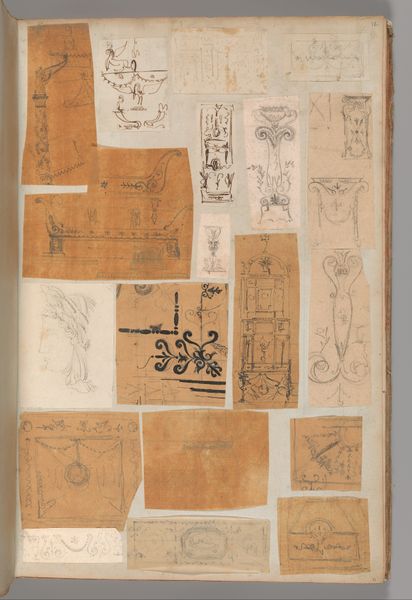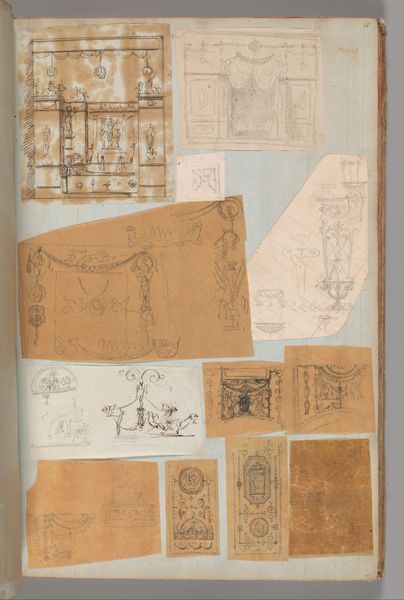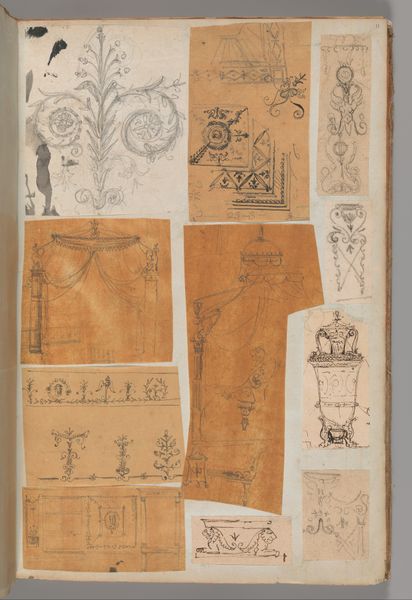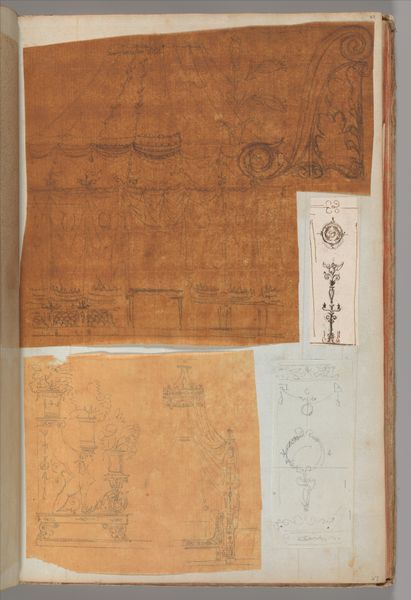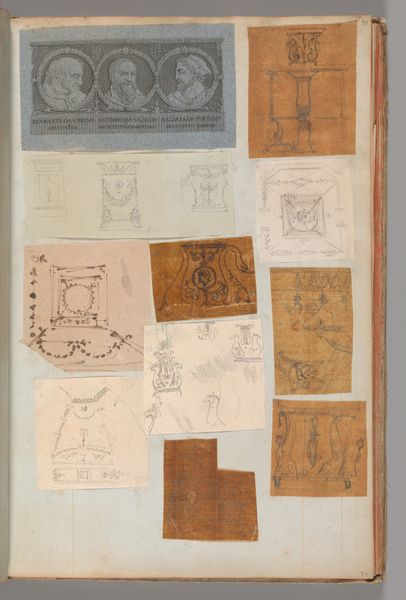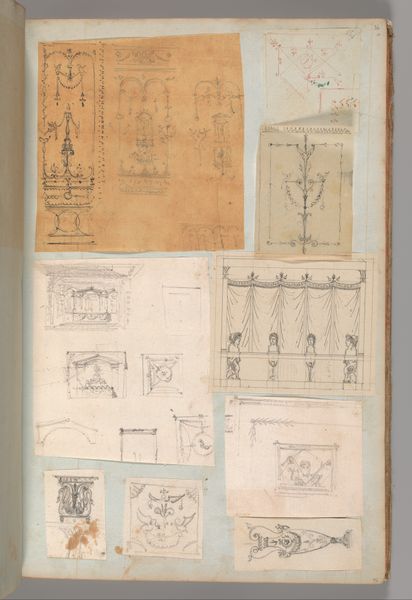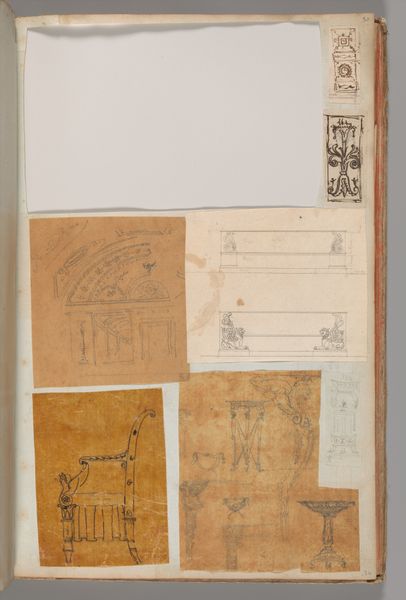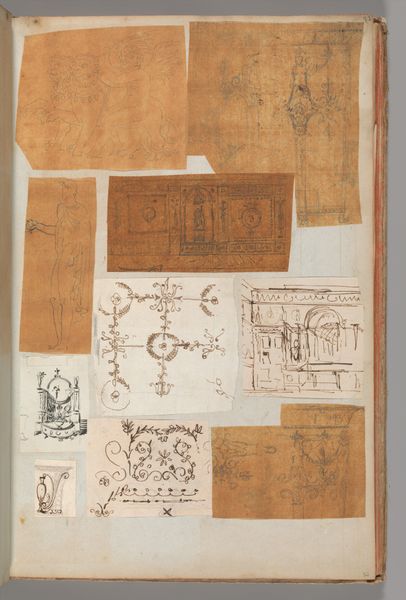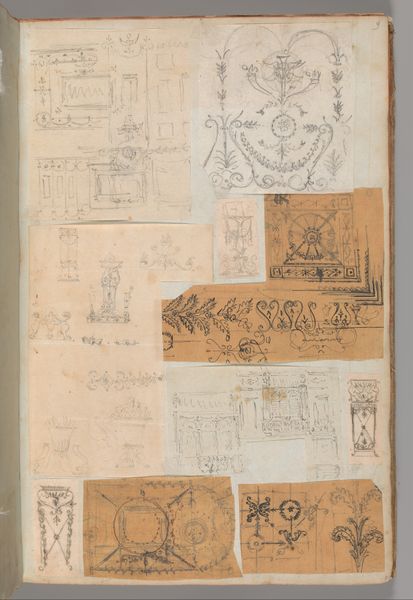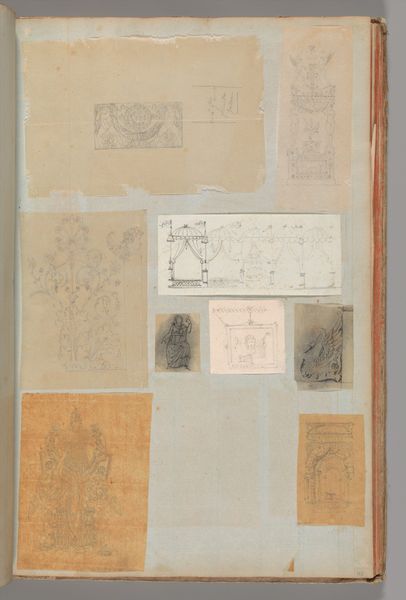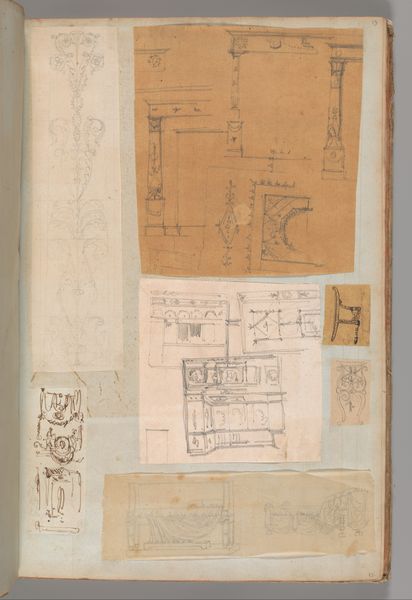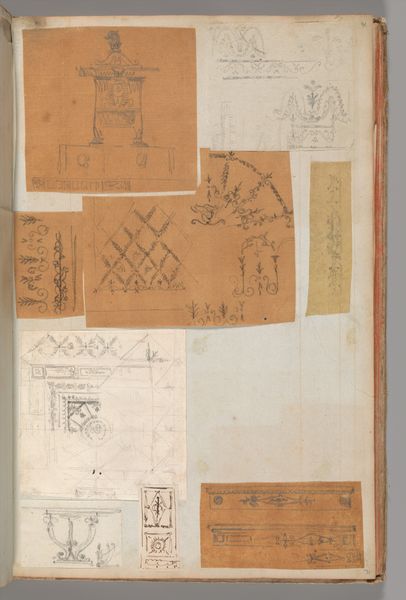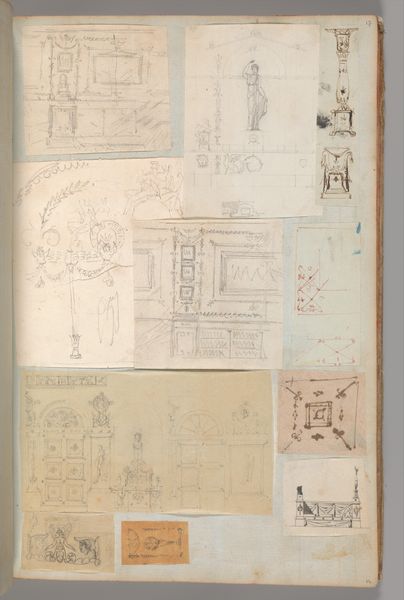
Page from a Scrapbook containing Drawings and Several Prints of Architecture, Interiors, Furniture and Other Objects 1795 - 1805
0:00
0:00
drawing, print, architecture
#
drawing
#
neoclacissism
# print
#
furniture
#
architecture
Dimensions: 15 11/16 x 10 in. (39.8 x 25.4 cm)
Copyright: Public Domain
Curator: At first glance, this scrapbook page has a scattered, almost dreamlike quality. There’s a range of architectural and furniture sketches, some more defined than others. It feels very immediate, a direct glimpse into the artist's working process. Editor: Indeed. What you're seeing is a page from a scrapbook by Charles Percier, dating from around 1795 to 1805. It combines drawings and prints showcasing architecture, interiors, furniture and other objects, reflective of the Neoclassical period. We’re lucky to be viewing it here at The Met. Curator: What strikes me is the inherent eclecticism. The juxtaposition of a carefully rendered interior alongside what appear to be more preliminary sketches gives a tangible sense of design evolution. It hints at how stylistic elements of Neoclassicism were refined and iterated. Editor: Precisely, and it shows us a specific cultural moment! Percier was a leading figure in shaping the aesthetic of the Directoire and Empire styles, and the political ramifications of that shouldn't be ignored. He was, essentially, designing the visual language of power for a new era. Curator: From a formal perspective, I notice how line quality differs so drastically across the page, creating distinct visual planes and highlighting different degrees of importance. Look at the commanding presence of the chair, a very interesting construction; versus the much simpler shapes of other vignettes, almost like afterthoughts or spontaneous concepts. Editor: These sorts of scrapbooks and albums reveal a lot about design trends. It reveals not only Percier's own artistic evolution but also, more broadly, how the late 18th and early 19th centuries were reimagining domestic and public spaces to create this Neoclassical world. Curator: Yes, and personally, I find something very relatable in this messy amalgamation of creative ideas. Even though it represents such a specific historical context, it somehow manages to evoke the universal experience of the artist in the act of creating. Editor: Absolutely. Hopefully looking closely at these designs and thinking about the era, we've shed a little more light on the intersections of power, aesthetics, and the evolving nature of taste at the turn of the 19th century.
Comments
No comments
Be the first to comment and join the conversation on the ultimate creative platform.
